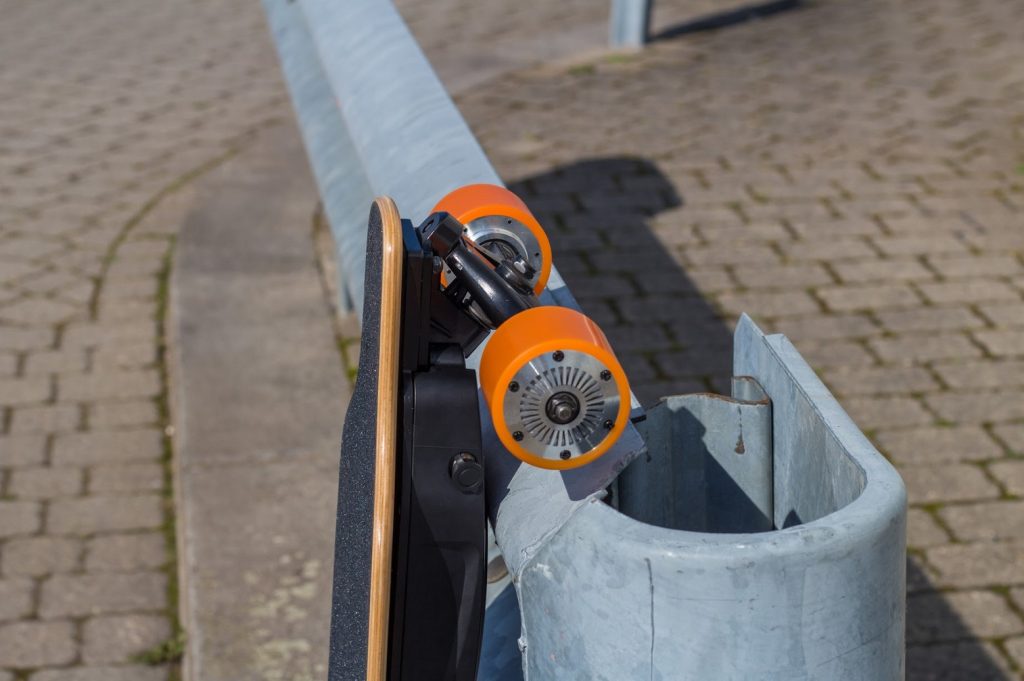Since their inception, skateboards have held a powerful charm. Combining a sense of freedom, fun, and rebellion that crosses generational lines. But in recent years, a new kid on the block has transformed the game – electric skateboards.
This cutting-edge technology has been stirring quite a debate among enthusiasts and newcomers alike. A report from Statista shows that skateboards are still ever-popular worldwide – at a market size projected to be over USD 2.5 billion by 2025. Just imagine how it will skyrocket when adding this new hype.
If you’re wondering how electric skateboards differ from traditional skateboards, you’re in the right place. Keep reading here to explore the differences between construction and mechanics to performance and safety:
Design And Construction
When it comes to the design and construction of traditional skateboards, they’ve remained mainly the same. A typical skateboard consists of a deck, trucks, wheels, and bearings, with the deck usually made from several layers of pressed maple wood.
On the other hand, electric skateboards are a technological upgrade. They also feature decks, trucks, and wheels, but it also has a battery, a motor (or motors), and a handheld controller for operation. In most cases, the battery and motor are embedded within the deck, keeping the design sleek and streamlined.
Finding the right fit also became more accessible. Shopping from an electric skateboard online store could mean you will have your sweet new ride delivered to your door quickly without hassle.
The Mechanics Of Movement

With traditional skateboards, the rider’s physical exertion is a must. You need to push off the ground with one foot to propel the skateboard forward, a technique known as ‘kicking.’ The rider can change the direction of the skateboard by shifting their weight to one side or the other – known as ‘carving.’
In contrast, electric skateboards harness the power of electricity for propulsion. Riders control the skateboard’s speed and direction with a handheld remote, negating the need for physical exertion. Some advanced electric skateboards even incorporate weight-sensing mechanisms, allowing riders to control speed and direction by leaning, akin to traditional carving.
Speed And Distance Capabilities
Traditional skateboards rely on the rider’s physical strength for speed. Therefore, the distance covered, and the speed attained greatly depend on the individual’s fitness level and skateboarding skills.
Electric skateboards, powered by a motor, offer far superior speed and distance capabilities. The top speed of electric skateboards can reach up to 25 mph or even more. Furthermore, they can cover up to 20 miles on a single charge, making them an appealing option for commuting or extended rides.
The Learning Curve
The learning curve for traditional skateboards can be steep. Mastering the art of balance, the technique of kick, and the skill to carve takes time and practice. Sometimes even leading to a few skimmed knees or elbows.
However, electric skateboards present a gentler learning curve. Their self-propelling nature and handheld remote control make it easier for beginners to start riding. Of course, mastering high-speed maneuvering and advanced techniques still requires practice.
Safety Considerations
Regarding safety, both types of skateboards require protective gear, including helmets and pads. However, the electric skateboard’s increased speed and mechanical components introduce additional risk factors. For instance, faster riding may lead to more severe injuries in case of a fall, and potential mechanical or electronic failures can pose risks too.
Environmental Impact And Cost
Traditional skateboards are more eco-friendly and cheaper than their electric counterparts. They also don’t require batteries or electricity. Because of the natural materials in the deck and none of the electrical components, they tend to be gentler on the environment.
Conversely, electric skateboards necessitate regular charging, and their batteries eventually need replacement, contributing to e-waste. However, when used as an alternative to cars for short commutes, they could lead to reduced carbon emissions. Regarding cost, electric skateboards, with their advanced technology, are significantly more expensive than traditional ones.
Conclusion
Each type of skateboard has its unique appeal. Traditional skateboards offer a raw, hands-on experience that has captivated riders for decades. They demand physical exertion and reward with a sense of accomplishment. However, they remain old-school cool.
In contrast, electric skateboards bring technology into the mix, offering high speeds, longer rides, and a gentler learning curve. They make skateboarding more accessible to a broader range of people and are particularly useful for urban commuting.
Choosing between a traditional skateboard and an electric one depends on your needs and preferences. Whether you’re after the simplicity and dynamic conventional skateboarding nature or the tech-infused convenience and speed of electric skateboarding, there’s a world of fun on four wheels.
Whether you’re an old-school skater or a tech-savvy rider, we hope this guide has helped you understand the critical differences between electric and traditional skateboards. Happy skating!
